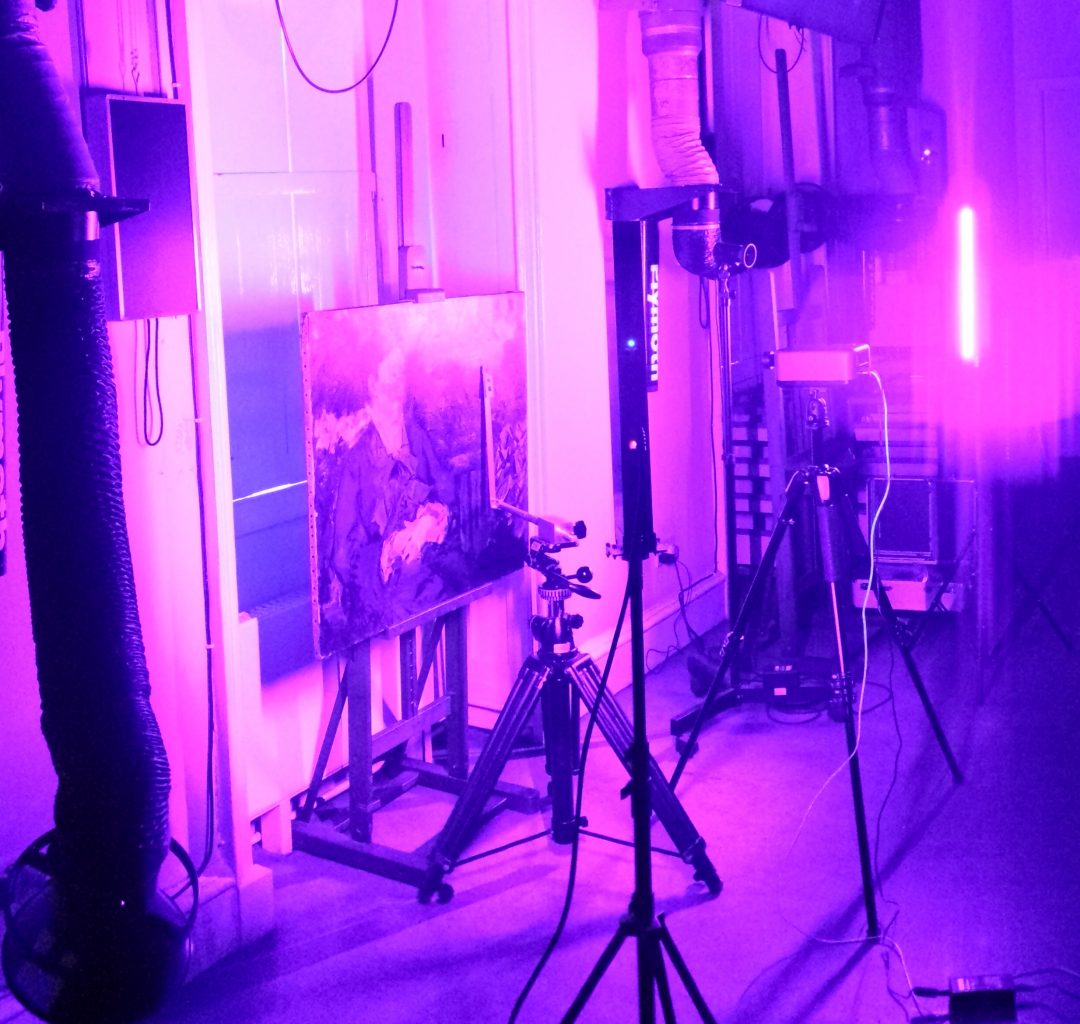User Group Leader: Aviva Burnstock
http://courtauld.ac.uk/
Venue: Department of Conservation and Technology, The Courtauld Institute of Art, UK
The EXAManet project focused on investigating for the first time a group of important paintings by Édouard Manet from the Courtauld Gallery using a range of non-invasive in situ analytical methods. These included: multispectral and hyperspectral VIS-NIR imaging, macro X-ray fluorescence (MAXRF), portable reflectance and fluorescence UV-Vis-NIR spectroscopy, portable Raman spectroscopy, and portable reflection mid-FTIR. The aims of the project were to critically evaluate the evidence from the application of this combination of non-invasive site-specific analyses and imaging methods and to highlight the artist’s painting techniques. The paintings investigated were: Le Déjeuner sur L’Herbe (1863-68); Au Bal – Marguerite de Conflans en Toilette de Bal (1870-1880); Banks of the Seine at Argenteuil (1874); and A Bar at the Folies–Bergère (1882). In addition, the study included an investigation of Madame Manet in the Conservatory, a privately owned copy of Manet’s painting of the same name in the Nasjonalmuseet in Oslo. This report summarizes the preliminary results of the data gathered. To facilitate the interpretation of the data gathered from the analysis of the paintings, a set of reference samples were produced using known materials characteristic of Manet’s works. These will be analysed with the same methods as the paintings within the next few months. The analysis of these reference samples will provide criteria for the evaluation of the effects of a range of variables on the interpretation of data gathered with the analytical techniques delivered by MOLAB. These include the effects of paint thickness and composition, the effects of combinations of pigments and layers, pigments mixed in different ratios, and the use of different binding media.
The analytical methods used in this project were complementary and provided data that allows an integrated approach to the characterisation of most of the pigments used in each painting. Prussian blue and cobalt blue were detected in many of the blue painted passages across the whole group of works. In addition, reflectance UV-VIS spectroscopy was used to identify cerulean blue in Banks of the Seine, where it was used together with cobalt blue and Prussian blue – both in juxtaposed strokes of pure pigment and mixed together – to paint the water and in just a few brushstrokes in Madame Manet in the Conservatory. Cobalt blue was the only blue pigment detected in the sketch Au Bal, that was made using a limited palette. The analytical results showed differences in the pigments used by Manet to paint the green passages within this group of works. Green pigments such as a green copper carbonate, viridian, emerald green, and possibly a green iron oxide pigment were used to paint the grass in the foreground and the trees in the background of Banks of the Seine. In contrast, admixtures of Prussian blue and either Viridian or chrome yellow were used to paint the green leafy settings of Le Déjeuner sur L’Herbe and Madame Manet in the Conservatory – in addition to cobalt blue in this latter case. The use of chrome yellow in the yellow areas of Banks of the Seine and Madame Manet in the Conservatory was confirmed by Raman spectroscopy. More specifically, the results showed that this pigment is present in a co-precipitated form with lead sulphate and that its crystallographic structure is possibly monoclinic. Previous studies have revealed that this kind of chrome yellow pigment is much less susceptible to darkening due to UVA-visible radiation than that with an orthorhombic crystallographic structure. MA-XRF also allowed the identification of Naples yellow in some details of Banks of the Seine, as well as iron-oxide containing pigments in many yellow passages of the whole group of paintings. Lead white was used either alone or mixed with zinc white and other pigments. The brown passages were painted using either a mixture of Prussian blue, an iron oxide containing pigments, and ivory black in Banks of the Seine, or a mixture of cobalt and iron-based pigments for Au Bal and Le Déjeuner sur L’Herbe. The Hg (mercury) distribution map of the pink flowers in the background of Madame Manet collected using MA-XRF indicated the use of vermilion. The results of reflectance and fluorescence UV-VIS spectroscopy of several spots of the same area suggested that an organic dyestuff was probably used in addition to vermilion. Vermilion was also identified in the red areas of the other works. Results using mid-range FTIR and Raman spectroscopy showed the presence of barium sulfate, calcium sulfate and kaolin in different areas of some of the works, suggesting that these materials might be either present in the ground or in the paint, probably added as extenders to the paint.Multispectral and hyperspectral imaging in the NIR range allowed optimizing the imaging of features underlying the paint layers not visible using X-radiography and wide-band IRR. For example, imaging of Au Bal at 1050nm enhanced the visibility of an inverted earlier sketch of a figure, possibly drawn with graphite. Imaging of Banks of the Seine in the range 2100-2500 nm allowed visualization of the outline of the two figures in the paint. The figures were painted over the water and their pose was altered during the painting stage.
The painting materials and techniques used for these works will be further investigated in the near future in collaboration with the MOLAB researchers. The results derived from the technical study of these paintings and the examination of the reference samples produced will be critically evaluated. This will allow assessing the combined application of different imaging techniques to the study of Impressionist paintings, and will provide new evidence for further examination of composition planning, finish and replication that are elements often debated in relation to Manet’s oeuvre.

